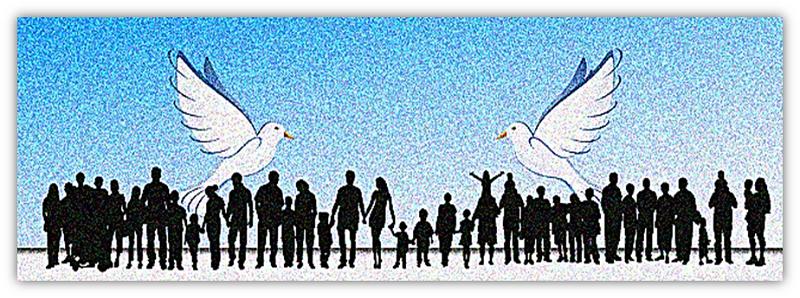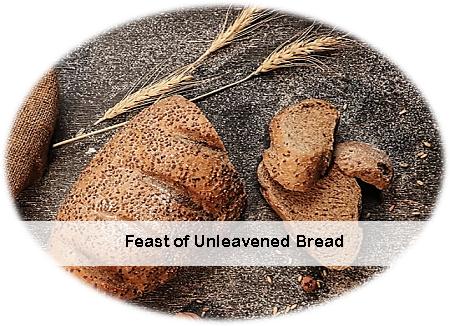Pentecost Fulfilled
Pentecost Fulfilled

Although we tend to associate Pentecost in the first instance with the outpouring of the Holy Spirit; Pentecost was of course first of all, an Old Testament feast which found its fulfillment in the saving work of Christ. Indeed, the first part of Acts 2:1 which begins the account of the outpouring of the Spirit can probably best be translated as follows: "When the Day of Pentecost was being fulfilled." (Compare, for example, the note in the New American Standard Bible), The realization that this was an Old Testament feast can deepen our understanding and appreciation for the fact that it was this festival that was chosen as the time for the outpouring of the Holy Spirit.
The Feast of Pentecost did not exist in isolation on Israel's calendar of special days. It was closely linked to, and dated from, celebrations connected with the Passover. The Passover feast was celebrated at twilight in the evening of the 14th day of the first month (Leviticus 23:5). It was followed on the 15th day by the beginning of the closely related seven-day Feast of Unleavened Bread (Leviticus 23:6), On the next day, the 16th, the first fruits of the (barley) harvest had to be brought to the Lord (Leviticus 23:11, cf. vv. 6-7), Seven weeks and one day later, the Feast of Weeks (Pentecost) was celebrated, during which, among other things, offerings from the grain harvest and two loaves of bread had to be brought to God (Leviticus 23:15-17), (The fact that this festival was on the 50th day, later gave rise to the name Pentecost from the Greek word for "fiftieth.") Because the week of the Feast of Unleavened Bread with all its different ceremonies and requirements was dominated by the Passover, it was known as Passover week. It is within the light of the Passover that Pentecost needs to be understood, Pentecost was a day of joy for the harvest that God had given His people. Not surprisingly, it was therefore also known as Harvest Feast (Exodus 23:16) and Day of the First-fruits (Numbers 28:26).
This day, however, was not the first time that first fruits were brought. The first fruits of the barley harvest had already been presented three days after Passover. Why did the Lord require the first fruits on Pentecost?
The Passover celebrations reminded Israel that God had passed over the blood-sprinkled Israelite homes and had killed the firstborn of Egypt. So God had worked their exodus from Egypt's bondage and led them out into freedom as His people (Exodus 12). God's salvation is however a complete salvation. He not only delivered His people from Egypt, but also brought them into the Promised Land, a land flowing with milk and honey. God will provide! For this reason God already told Israel in the wilderness that when they would come to Canaan, and celebrate the Passover and the Feast of Unleavened Bread, the sheaf of the first fruits of the harvest would need to be brought to God three days after the Passover (Leviticus 23:10-11). Fifty days later near the end of the harvest season more fruits of the field, including two loaves of bread, were to be given (Leviticus 23:16-17), for Israel had to realize and give recognition to the fact that God not only delivered His people from certain death in bondage in Egypt, but He also provided life nourishment in the land of promise. The first fruits of the harvest, and indeed the entire harvest, were the result of His salvation as commemorated at Passover. Thus also on the day of Pentecost Israel not only had to give first fruits, but also had to recall their bondage in Egypt (Deuteronomy 16:12) and so enjoy and celebrate the new life God had given them because of the Exodus. This new life also enabled them to live in holy service to God.

With this orientation to some Old Testament data we can appreciate something of the tension and anticipation surrounding the first Pentecost after the death and resurrection of the Lord Jesus Christ. When Christ lay down His life on the cross, He did so as our Passover Lamb (1 Corinthians 5:7), fulfilling the Passover feast and setting His people free from the dominion of the evil one (cf. Colossians 2:14-15). Three days later He rose from the dead as the first fruit of the salvation He had accomplished for His people (cf. 1 Corinthians 15:20, 23). He thus fulfilled the offering of the first sheaf of grain on that day and showed that God's salvation not only delivers His people from bondage, but also gives the new life (cf. Romans 6:5-11). Now Pentecost had come. With a fulfilled Passover and the fulfillment of the offering of the first fruits three days after Passover, what would Pentecost bring? Was this feast not closely related and did it not speak eloquently of the provision of a full harvest and the new life of service that God gave His people on the basis of the salvation He had accomplished as seen in Passover?
In Acts 2:1 we are told that "they were all together in one place." No one was missing. There was a sense of expectation (see Acts 1:4, 5). They were not disappointed. The risen Lord poured out His Spirit as He had promised (Acts 1:8).
Having effected the deliverance of His people from the bondage of sin, He continued His work of salvation by giving them His life-giving Spirit. The people whom He had redeemed as His possession on Golgotha and for whose justification He had been raised from the grave (Romans 4:25) were now invigorated with the newness of life in Christ and made a new creation (cf. 2 Corinthians 5:17). What a change that meant! Filled with the Spirit of the risen Lord, they shared in the first fruits of what life with God, on the basis of His accomplished salvation, was all about. In this way they were equipped for the service of the God of their salvation.
One of the immediate consequences of the outpouring of the Spirit was that the Spirit of Christ gave them new power and boldness. After the death of the Passover Lamb, they had been frightened, disheartened and had met behind closed doors. But now they received courage to speak openly of the mighty works of God (Acts 2:11). Peter, who a little over seven weeks ago had not dared to confess the Lord Jesus before a servant girl (Matthew 26:69-72), now boldly proclaimed the Christ before the "men of Judea and all who dwell in Jerusalem" (Acts 2:14).
Peter's sermon is a clear proclamation of the Christ, for the New Testament Pentecost can only be understood within the context of Christ's work of fulfilling the Passover. On the Day of Pentecost the Lord Jesus Christ who had brought about the deliverance of His people continued to provide for them. With His life-giving Spirit He made them a new creation (cf. Romans 8:9-11) equipped to serve Him with the prophetic proclamation of His salvation for the great ingathering of the harvest in the last age. That fact speaks of the abiding significance of Pentecost. Christ, the Passover Lamb and risen Lord, continues His work (cf. Revelation 5). The three-thousand who believed on the Day of Pentecost were but a beginning. The results of Christ’s once-for-all salvation work continue to be evident as He gives new life to His redeemed people and as He harvests to the glory of the Father. The final result will be a new creation, not just as seen in the people whom He recreates after His image, but a new recreated world for them to dwell in. For Pentecost, coming after a fulfilled Passover, means that God's people may have a foretaste of the full life with God in the Spirit of Jesus Christ. That is what gives life, in this last age of the Spirit of Jesus Christ, a lustre of joy and festivity for those who confess the Lamb of God. They can live in the expectation of the coming, complete fulfillment of Christ's salvation work.

Add new comment